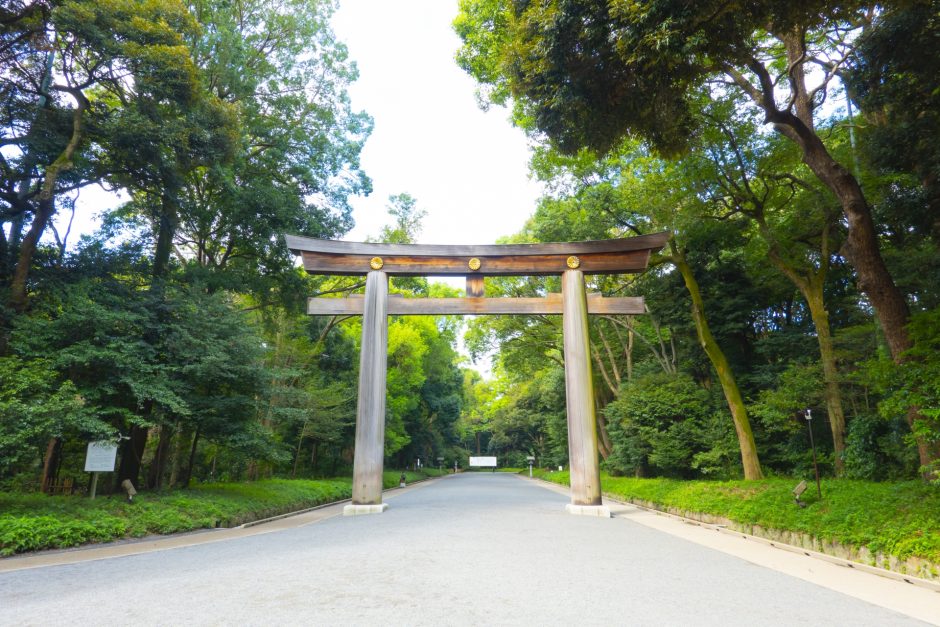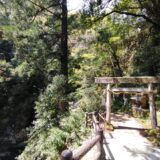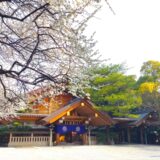目次
- 【Meiji Jingu Shrine summary】
- 【Meiji Jingu Shrine first torii】
- 【Meiji Jingu Shrine road approaching a shrine eternal forest】
- 【Meiji Jingu Shrine museum】
- 【Meiji Jingu Shrine sake cask dedicated to a Shinto god】
- 【Meiji Jingu Shrine Otorii (second torii)】
- 【Meiji Jingu Shrine third torii】
- 【Meiji Jingu Shrine Camellia japonica (Camellia japonica ‘Meoto-kusu’)】
- 【Meiji Jingu Shrine outer shrine】
- 【Meiji Jingu Shrine sanctuary】
- 【Meiji Jingu Shrine imperial garden】
- 【Meiji Jingu Shrine GOSHUIN】
- 【Meiji Jingu Shrine Nearby attractions】
- 【Meiji Jingu Shrine Access】
- Manager’s Comments
- Meiji Jingu Shrine
【Meiji Jingu Shrine summary】
Meiji Jingu Shrine was built in 1920. The main deities are Emperor Meiji and his wife Empress Dowager Shoken, who died in 1912 and Empress Dowager Shoken in 1914. At that time, there was a public outcry for the construction of a shrine dedicated to their spirits, and it was decided that the shrine would be built in Yoyogi. The two deities were Emperor Meiji and Empress Dowager Shoken, the 122nd emperor of Japan.
【Meiji Jingu Shrine first torii】
![Meiji Jingu Shrine [Tokyo] DSC 0042 1024x768 - Meiji Jingu Shrine [Tokyo]](https://japan-shrine.info/wp-content/uploads/DSC_0042-1024x768.jpg)
Ichino Torii, located at the entrance to the south approach, is the symbol of Meiji Jingu Shrine. This torii was rebuilt in July 2022 due to its age, and is now being replaced by a new one. It is one of the largest wooden “Myojin Torii” in Japan, with a height of 11 meters, a length of 15.6 meters, and a diameter of 1.06 meters for both pillars. It is the same size as the old torii, but the timber has been changed from Taiwanese cypress to Japanese cedar.
【Meiji Jingu Shrine road approaching a shrine eternal forest】
![Meiji Jingu Shrine [Tokyo] DSC 0043 1024x768 - Meiji Jingu Shrine [Tokyo]](https://japan-shrine.info/wp-content/uploads/DSC_0043-1024x768.jpg)
The shrine is located in a vast forest, 15 times the size of the Tokyo Dome, with approximately 100,000 trees donated from all over Japan. I think it is wonderful that the forest path was planned not simply to plant trees from the founding plan, but also to allow the forest to be created as naturally as possible after the trees are planted. This forest is currently under construction.
【Meiji Jingu Shrine museum】
![Meiji Jingu Shrine [Tokyo] DSC 1385 1 1024x768 - Meiji Jingu Shrine [Tokyo]](https://japan-shrine.info/wp-content/uploads/DSC_1385-1-1024x768.jpg)
From the Ichino Torii (first torii gate), follow the approach and you will find the Meiji Jingu Museum on the right.
![Meiji Jingu Shrine [Tokyo] DSC 1383 1024x768 - Meiji Jingu Shrine [Tokyo]](https://japan-shrine.info/wp-content/uploads/DSC_1383-1024x768.jpg)
Inside the museum, items related to Emperor Meiji and Empress Dowager Shoken, the deities of Meiji Shrine, are on display. However, the number of exhibits is small and the admission fee of 1,000 yen is relatively expensive, so the number of visitors to the museum is small. However, the museum ticket allows you to visit the Treasure House as well, so if you have the time and money to spare, this is definitely a good place to visit.
【Meiji Jingu Shrine sake cask dedicated to a Shinto god】
![Meiji Jingu Shrine [Tokyo] DSC 0067 1024x768 - Meiji Jingu Shrine [Tokyo]](https://japan-shrine.info/wp-content/uploads/DSC_0067-1024x768.jpg)
Further on from the museum, you will notice shelves stacked with many sake barrels. There are about 200 of them, which were dedicated by sake brewers from all over Japan. The same ones can be seen at typical shrines in various regions, but in terms of the number of dedicated sake barrels on display, Meiji Shrine is probably the best in class. The interesting design of the labels also makes it a popular photo spot, with many international tourists taking pictures. We are often asked to take pictures here by tourists. On the other side of the sake barrels, wine barrels are displayed because Emperor Meiji was a wine lover.
![Meiji Jingu Shrine [Tokyo] 25266598 m 1024x683 - Meiji Jingu Shrine [Tokyo]](https://japan-shrine.info/wp-content/uploads/25266598_m-1024x683.jpg)
【Meiji Jingu Shrine Otorii (second torii)】
Turning left from the sake barrel, a large wooden torii gate appears.
![Meiji Jingu Shrine [Tokyo] DSC 0045 1 1024x768 - Meiji Jingu Shrine [Tokyo]](https://japan-shrine.info/wp-content/uploads/DSC_0045-1-1024x768.jpg)
It was built in 1920 and rebuilt in December 1975. The original wood is a 1,500-year-old cypress tree, and at 12 meters tall, slightly larger than the Ichino-torii (first torii), it is the largest wooden torii in Japan.
【Meiji Jingu Shrine third torii】
![Meiji Jingu Shrine [Tokyo] meijijingu1 1 1024x683 - Meiji Jingu Shrine [Tokyo]](https://japan-shrine.info/wp-content/uploads/meijijingu1-1-1024x683.jpg)
From the second torii gate, a large right turn on the approach road leads to the third torii gate. The three torii gates so far are all made of wood. They are solid wood with no vermilion painted on them and are extremely gorgeous.
![Meiji Jingu Shrine [Tokyo] DSC 1388 2 1024x768 - Meiji Jingu Shrine [Tokyo]](https://japan-shrine.info/wp-content/uploads/DSC_1388-2-1024x768.jpg)
Passing through the third torii gate, you will see the shrine gate and the main shrine. There was just a wedding ceremony and it was starting before the third torii. Congratulations!
【Meiji Jingu Shrine Camellia japonica (Camellia japonica ‘Meoto-kusu’)】
![Meiji Jingu Shrine [Tokyo] DSC 0051 1024x768 - Meiji Jingu Shrine [Tokyo]](https://japan-shrine.info/wp-content/uploads/DSC_0051-1024x768.jpg)
The two camphor trees standing close together in front of the main shrine are known as the “husband and wife camphor trees.” Dedicated in 1920 when Meiji Shrine was built, the two camphor trees are known as symbols of domestic safety and marriage, as Emperor Meiji and Empress Dowager Shoken were known to be on good terms.
【Meiji Jingu Shrine outer shrine】
![Meiji Jingu Shrine [Tokyo] meijijingu3 1024x768 - Meiji Jingu Shrine [Tokyo]](https://japan-shrine.info/wp-content/uploads/meijijingu3-1024x768.jpg)
The buildings of Meiji Jingu are constructed in the traditional Japanese architectural style known as Shinmei-zukuri. The main building is the main hall in the center, surrounded by a worship hall and a Shinto gate.
![Meiji Jingu Shrine [Tokyo] meijijingu2 1024x768 - Meiji Jingu Shrine [Tokyo]](https://japan-shrine.info/wp-content/uploads/meijijingu2-1024x768.jpg)
The building is mainly made of wood and features beautiful roofs and carvings.
【Meiji Jingu Shrine sanctuary】
![Meiji Jingu Shrine [Tokyo] DSC 1403 1024x768 - Meiji Jingu Shrine [Tokyo]](https://japan-shrine.info/wp-content/uploads/DSC_1403-1024x768.jpg)
It can be visited only on limited open days, and admission is free with a ticket for the Meiji Jingu Museum. Although it is a treasure house, it exhibits materials related to the founding of Meiji Shrine, and there are very few visitors to the museum, probably because of its remote location.
![Meiji Jingu Shrine [Tokyo] DSC 1397 1024x768 - Meiji Jingu Shrine [Tokyo]](https://japan-shrine.info/wp-content/uploads/DSC_1397-1024x768.jpg)
The building is said to be a typical early reinforced concrete building in Japan, with a large floor structure in the style of a schoolhouse, modeled after the schoolhouse at Nara’s Shosoin. It is now designated as a National Important Cultural Property.
![Meiji Jingu Shrine [Tokyo] DSC 1399 1024x768 - Meiji Jingu Shrine [Tokyo]](https://japan-shrine.info/wp-content/uploads/DSC_1399-1024x768.jpg)
I think it is better to visit the building as a place to enjoy the building itself, not its treasures. There is also a grassy plaza in front of the building, which is a good place to take a break.
【Meiji Jingu Shrine imperial garden】
![Meiji Jingu Shrine [Tokyo] DSC 0062 1024x768 - Meiji Jingu Shrine [Tokyo]](https://japan-shrine.info/wp-content/uploads/DSC_0062-1024x768.jpg)
Admission is 500 yen. The Japanese garden, which is hard to believe that it is in the middle of the city, is spread out with historical buildings, a large pond, and beautiful flowers depending on the season. The best time to see the irises, in particular, is from late May to late June, and a walk through the Gyoen is recommended after visiting Meiji Jingu Shrine. Be careful when you visit the garden, as it is lonely in winter and other seasons.
【Meiji Jingu Shrine GOSHUIN】
![Meiji Jingu Shrine [Tokyo] meijijingu leter 692x1024 - Meiji Jingu Shrine [Tokyo]](https://japan-shrine.info/wp-content/uploads/meijijingu-leter-692x1024.jpg)
Meiji Jingu shrine red seal: 500 yen (2023)
【Meiji Jingu Shrine Nearby attractions】
Togo Shrine, Shinjuku Gyoen, Shibuya (Hachiko and Scramble Crossing)
【Meiji Jingu Shrine Access】
Manager’s Comments
Meiji Jingu Shrine is located on a vast site and surrounded by a rich natural environment. Although there are many people, you will not feel that much stress because of the vast site area. Although the shrine has a relatively short history, I believe that Meiji Jingu is without a doubt the finest shrine in Tokyo. I always wonder why the approach to the shrine and the hall of worship are not in a straight line, and why the second torii gate is larger than the first torii gate.
1-1 Yoyogi-Kamizonocho, Shibuya-ku, Tokyo 151-8557, Japan
※Parking lot for worshippers available
 Tour of Japanese shrines and temples
Tour of Japanese shrines and temples 

![Meiji Jingu Shrine [Tokyo] 24270958 m 520x300 - Meiji Jingu Shrine [Tokyo]](https://japan-shrine.info/wp-content/uploads/24270958_m-520x300.jpg)
![Meiji Jingu Shrine [Tokyo] DSC 1373 520x300 - Meiji Jingu Shrine [Tokyo]](https://japan-shrine.info/wp-content/uploads/DSC_1373-520x300.jpg)
![Meiji Jingu Shrine [Tokyo] 59f6bc6113bcb8528dd827bf26cc7965 - Meiji Jingu Shrine [Tokyo]](https://japan-shrine.info/wp-content/uploads/sng/59f6bc6113bcb8528dd827bf26cc7965.png)
![Meiji Jingu Shrine [Tokyo] 4041678 m 150x150 - Meiji Jingu Shrine [Tokyo]](https://japan-shrine.info/wp-content/uploads/4041678_m-150x150.jpg)
![Meiji Jingu Shrine [Tokyo] DSC 0809 150x150 - Meiji Jingu Shrine [Tokyo]](https://japan-shrine.info/wp-content/uploads/DSC_0809-150x150.jpg)
![Meiji Jingu Shrine [Tokyo] DSC 0248 150x150 - Meiji Jingu Shrine [Tokyo]](https://japan-shrine.info/wp-content/uploads/DSC_0248-150x150.jpg)
![Meiji Jingu Shrine [Tokyo] 23740271 m 150x150 - Meiji Jingu Shrine [Tokyo]](https://japan-shrine.info/wp-content/uploads/23740271_m-150x150.jpg)

